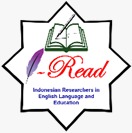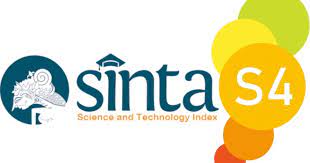Concept Mapping Strategy through Hybrid Flexible Course: Its Significance toward Student Achievement
DOI:
https://doi.org/10.22219/englie.v3i1.19797Keywords:
concept mapping strategy, hybrid flexible course, student achievementAbstract
The pandemic era pushed teachers to switch their teaching methods into online learning. The concept mapping strategy was one of the most effective teaching strategies for teaching English in face-o face mode . Is the concept mapping strategy still effective in online learning mode? This study utilized a quantitative approach to compare the use of concept mapping strategy and conventional strategy. Both classes did the instruction through hybrid flexible course. To obtain the data, test and observation were used. ANCOVA was performed to analyze the data to get the specific data concern to the effect of the strategy to the student grade. The findings showed that in the hybrid flexible course, concept mapping strategy did not impact the students’ achievement, but from the observation, it did impact the students’ motivation and activity during the instruction. It can be concluded that there is no significant difference of using concept mapping strategy and conventional strategy through hybrid flexible course
Downloads
References
Al-Jarf, R. (2021). Teaching reading to EFL freshman students with Mind Mapping Software. SSRN Electronic Journal, 24.
Amin, R., & Li, K. (2021). Should the graduate mathematics courses be offered online? Journal of Mathematics and Technology, 4(1).
Bakolis, A., Stamovlasis, D., & Tsaparlis, G. (2021). Explicit teaching of problem categerization using concept mapping, and an exploratory study of its effect on student achievement and on conceptual understanding – The case of Chemical Equilibrium problems. In Chemistry Teacher International (pp. 1–16). De Gruyter.
Brown, H. D. (2003). Language assesment, principles and classroom practices. Longman.
Cahyono, B. Y., & Widiati, U. (2006). The teaching of EFL reading. TEFLIN Journal, XVII(1).
Cohen, L., Manion, L., & Morrison, K. (2005). Research methods in education (5th ed.). Taylor & Francis e-Library.
Cresswell, J. W. (2012). Educational research: Planning, conducting, and evaluating quantitative and qualitative research. Pearson.
Cronbach, L. J. (n.d.). Coefficient alpha and the internal Structure of test. Psyclzometrika, 16, 297–334.
Daymont, T., & Blau, G. (2011). Student performance in online and traditional section of an undergraduate management course. Journal of Behavioral & Applied Management, 9(3), 275–294.
Dolehanty, C. (2021). Concerpt Mapping and reading comprehension.
Dube, B. (2020). Rural online learning in the context of Covid-19 in South Africa: Evoking an inclusive education approach. Multidisciplinary Jourbal of Education Research, 10(2), 134–157.
Harmer, J. (2007). The practice of English Language Teaching (4th ed.). Pearson Education Limited.
Heeneman, S., Driessen, E., Durning, S. J., & Torre, D. (2019). Use of an E-Portofolio Mapping tool: Connecting experiences, analysis and action by learners. Perspect Med Educ, 8(3), 197–200.
How countries are using Edtech (Including online learning, radio, television, texting) to support access to remote learning during the COVID-19 Pandemic. (2020). The World Bank.
Leipzig, D. H. (2021). What is reading? WETA.
Marashi, H., & Kangani, M. (2018). Using Concept Mapping and Mind Mapping in descriptive and narrative writing Ccasses. Journal of Language and Translation, 8(2), 93–106.
Mills, G. E., Airasian, P., & Gay, L. R. (2012). Educational research: Competencies for analysis and application. Pearson.
Nurhikmah. (2011). Implementing story mapping strategy to improve the eleventh grade students’ reading comprehension of MAN 2 Marabahan. Universitas Negeri Malang.
Nuttal, C. (1996). Teaching reading skills in a foreign language (New Edition). Heinemann.
Parkes, M., Gregory, S., Fletcher, P., & Adlington, R. (2015). Bringing people together while learning apart: Creating online learning environments to support the needs of rural and remote students. Australian and International Journal of Rural Education., 25(1), 66–78.
Rasmitalida, et al. (2020). The perception of primary school teachers of online learning during the COVID-19 pandemic period: A case study in Indonesia. Journal of Ethnic and Cultural Studies, 90–109.
Sieben, J. M., Heeneman, S., Verheggen, M. M., & Driessen, E. W. (2021). A concept mapping support the quality of reflections made by undergraduate medical students? A mixed method study. Medical Teacher, 43(4), 388–396.
Syarif, M. (2003). Pemanfaat strategi pemetaan makna untuk meningkatkan kemampuan memahami isi bacaan siswa kelas IV SD Penanggungan 2 kota Malang. Universitas Negeri Malang.
Torre, D. M., Daley, B., Stark-Schweitzer, T., Siddartha, S., Petkova, J., & Ziebert, M. (2007). A qualitative evaluation of medical student learning with concept maps. Med Teach, 29(9), 949–955.
Yensy, N. A. (2020). Effectiveness of mathematical statistics learning through Whatsapp group media.
Downloads
Published
How to Cite
Issue
Section
License
Copyright (c) 2022 Kiswati, Rosi Anjarwati

This work is licensed under a Creative Commons Attribution-ShareAlike 4.0 International License.
Authors who publish with English Learning Innovation (englie) agree to the following terms:
- For all articles published in English Learning Innovation (englie), copyright is retained by the authors. Authors give permission to the publisher to announce the work with conditions. When the manuscript is accepted for publication, the authors agree to automatic transfer of the publishing right to the publisher.
- Authors retain copyright and grant the journal right of first publication with the work simultaneously licensed under a Creative Commons Attribution-ShareAlike 4.0 International License that allows others to share the work with an acknowledgement of the work's authorship and initial publication in this journal.
- Authors are able to enter into separate, additional contractual arrangements for the non-exclusive distribution of the journal's published version of the work (e.g., post it to an institutional repository or publish it in a book), with an acknowledgment of its initial publication in this journal.
- Authors are permitted and encouraged to post their work online (e.g., in institutional repositories or on their website) prior to and during the submission process, as it can lead to productive exchanges, as well as earlier and greater citation of published work (See The Effect of Open Access).
This work is licensed under a Creative Commons Attribution-ShareAlike 4.0 International License.
















1.png)












